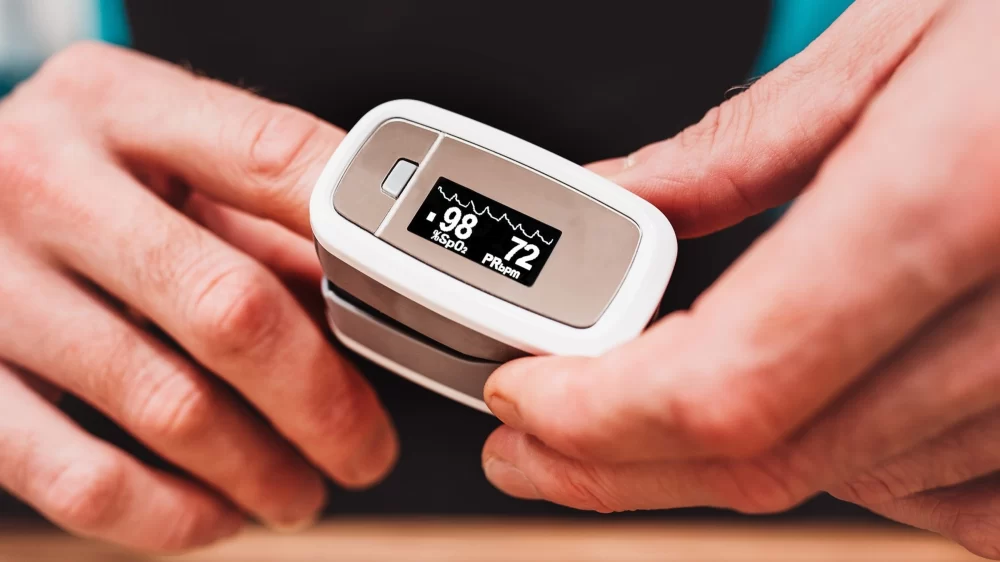- heart-disease-pulse-oximeter-overview - Understanding Heart Disease and the Role of a Pulse Oximeter
- oxygen-saturation-heart-health - Why Oxygen Saturation Matters for Heart Health
- real-case-pulse-oximeter-heart-disease - Real-life Cases: Pulse Oximeter Use in Heart Disease Management
- choosing-pulse-oximeter-heartcare-hub - How to Choose the Right Pulse Oximeter for Heart Disease at HeartCare Hub
- expert-tips-heart-disease-pulse-oximeter - Expert Tips: Using a Pulse Oximeter Effectively for Heart Disease
Understanding Heart Disease and the Role of a Pulse Oximeter
Heart disease affects millions of people worldwide and remains one of the leading causes of death. Its impact on daily life can be overwhelming, especially when patients experience symptoms like shortness of breath, chest pain, and fatigue. Modern technology now allows us to track key health indicators from home, and one small device making a big difference is the pulse oximeter.
A pulse oximeter is a compact, non-invasive gadget that clips onto your fingertip to measure blood oxygen saturation (SpO₂) and pulse rate. For individuals with heart disease, tracking these numbers at home has become not just convenient but essential. It allows patients to catch early warning signs and respond quickly, potentially preventing severe complications.
The increasing use of pulse oximeters in heart health management highlights a shift toward proactive care. If you or a loved one is living with heart disease, understanding how a pulse oximeter works and what your readings mean can offer both peace of mind and a greater sense of control.

Why Oxygen Saturation Matters for Heart Health
Oxygen saturation indicates how much oxygen your red blood cells are carrying. For someone with heart disease, this measurement is more than just a number. The heart and lungs work together to keep oxygen flowing throughout your body, and any disruption can put your health at risk.
When the heart is weak or compromised—such as in congestive heart failure or after a heart attack—blood may not be pumped efficiently, leading to lower oxygen levels. A pulse oximeter helps detect these drops early. Healthcare professionals typically recommend that heart disease patients keep an eye on their SpO₂ and seek medical help if levels drop below a certain point, usually 92-94%, depending on their doctor’s advice.
Personal monitoring empowers patients to better understand their bodies. For example, if a patient with coronary artery disease notices a consistent decrease in oxygen saturation during physical activity, it could signal the need for an adjustment in treatment or a conversation with their doctor.
Capital Health Medical Center – Hopewell
capital health medical center hopewell
1 Capital Way, Pennington, NJ 08534, USA

Real-life Cases: Pulse Oximeter Use in Heart Disease Management
Real stories make the benefits of pulse oximeter use come alive. Take the case of Mark, a 62-year-old retired engineer diagnosed with heart failure. After a minor episode of breathlessness, Mark’s cardiologist recommended regular SpO₂ monitoring at home. One evening, Mark’s pulse oximeter reading fell to 89%, even though he felt only slightly uncomfortable. Because he was monitoring, he called his doctor, who advised him to go to the hospital. This quick action caught early heart failure exacerbation—Mark was treated promptly and avoided a much more serious emergency.
Another example comes from Emily, who has lived with congenital heart disease since childhood. For her, daily pulse oximeter checks help distinguish between harmless fatigue and symptoms that need medical attention. She says, “It’s reassuring to know when I need to act and when I can rest easy.”
These cases show that a pulse oximeter is not just for professionals or emergencies. It’s a tool that helps people living with heart disease take control of their daily lives and health decisions.
How to Choose the Right Pulse Oximeter for Heart Disease at HeartCare Hub
Not all pulse oximeters are created equal, and choosing the right one matters—especially for heart disease management. Look for a model that offers accurate readings, a clear display, comfortable fit, and reliable battery life. Some advanced options come with smartphone connectivity, allowing you to track trends over time or share data with your healthcare provider.
At HeartCare Hub, you’ll find a carefully curated selection of pulse oximeters that meet the needs of people with heart conditions. The store focuses on high-quality, easy-to-use devices trusted by medical professionals. If you’re unsure which product is right for you, HeartCare Hub’s team is ready to offer personalized advice, helping you make a confident and informed decision.
Choosing the right pulse oximeter is more than a purchase—it’s an investment in your health journey. And with support from HeartCare Hub, you’re not alone.
Expert Tips: Using a Pulse Oximeter Effectively for Heart Disease
To get the most out of your pulse oximeter, experts recommend a few key practices. Always measure your SpO₂ at the same time each day, in a relaxed and consistent environment. Cold fingers or nail polish can affect accuracy, so ensure your hands are warm and clean. Record your readings and look for patterns, not just single numbers.
Consult your healthcare provider about your personal safe range and when to take action. It’s also wise to bring your device to medical appointments—so your doctor can verify its accuracy and teach you how to interpret the numbers.
Remember, a pulse oximeter is a supportive tool. It doesn’t replace professional medical advice, but it does empower you to take charge of your heart health. By staying informed and prepared, you can improve your quality of life—and with resources from HeartCare Hub, reliable products and expert guidance are always within reach.






















Deborah Heart and Lung Center
deborah heart and lung center
200 Trenton Rd, Browns Mills, NJ 08015, USA